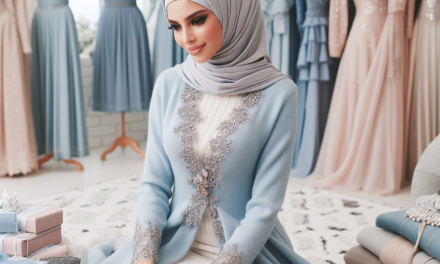Accessibility: Listen to the article instead.
Q: What are some values promoted by the hijab?
A: The hijab promotes modesty, self-respect, humility, and moral strength, fostering stability, harmony, and healthy relationships within families and communities.
– Hijab City HQ

The Hijab: More than an Accessory _
🧕🏾 “The hijab is a garment worn by Muslim women as a symbol of their faith and modesty.”
The hijab, a symbolic garment worn by many Muslim women, surpasses the definition of a simple accessory. It stands as an outward manifestation of deep-seated inner values and serves as a testament to the journey of character development. This article sheds light on how the hijab nurtures inner beauty and fortifies moral strength, transforming it from a simple piece of cloth to an emblem of identity and self-expression.
Modesty and Mindfulness _

In Islam, a ‘mahram’ is an individual, regardless of gender or relation, one is permanently forbidden to marry due to a close blood, nursing, or marriage tie. For women, this includes relatives like father, son, brother, uncle, nephew, her mother’s husband, stepson, and son-in-law. A ‘non-mahram’ is someone marriageable, typically unrelated individuals of the opposite gender.
The hijab’s most visible aspect, modesty, intertwines with various aspects of life, beginning with the concept of “lowering the gaze”. This practice implies maintaining purity of thought and respect by avoiding unnecessary eye contact with non-mahrams, those unrelated individuals of the opposite gender. This practice is not merely about physical behavior; it is a mental discipline that encourages mindfulness. Reducing temptation serves as a constant reminder of our ethical obligations, helping individuals stay aware of their actions and effects. Promoting values such as modesty, self-respect, humility, and moral strength, contributes to the stability and harmony of the family unit and the wider community. It encourages respect for personal boundaries and autonomy, fostering healthy relationships within families. Moreover, the hijab’s emphasis on self-discipline, responsibility, and ethical conduct can strengthen community bonds, as individuals guided by these principles are likely to contribute positively to their communities.
Guarding Physical Interactions _



The hijab also plays a role in promoting mindful physical interactions. For instance, it encourages avoiding unnecessary physical contact, such as handshakes and hugs, with non-mahrams. This practice is not about fostering a sense of distance, but rather about fostering a sense of self-respect and the protection of personal boundaries. It reinforces the dignity and autonomy of the individual, creating an environment where individuals feel secure and respected.
Power of Modest Dress _



The hijab is a powerful testament to the impact of modest dressing. Choosing to wear the hijab aligns with the principles of humility and avoidance of undue attention. This choice, far from being an imposition, is a personal decision that reflects internal values more than societal expectations. It underscores the freedom within the practice of hijab, allowing women to express their identity and beliefs in a way that feels authentic to them.
Cultivating Inner Radiance _



Beyond the external modesty it represents, the hijab plays a crucial role in nurturing inner radiance. It fosters self-confidence and self-worth, empowering women to seek validation in their character and values, rather than their physical appearance alone. Numerous successful Muslim women exemplify this confidence through their accomplishments and contributions to society. They demonstrate that modesty does not limit ambition or potential but instead can fuel it.
Strengthening the Moral Compass _

Adherence to the principles of modesty also serves to strengthen one’s moral compass. It nurtures virtues such as self-discipline, responsibility, and ethical conduct. Many individuals have discovered that their commitment to practicing hijab has reinforced their commitment to righteousness and good deeds. The hijab acts as a catalyst, shaping them into improved versions of themselves and inspiring them to strive for moral and ethical excellence.
Fostering Inner Peace _

The hijab also encourages a sense of inner peace and tranquility. By minimizing external distractions, it promotes an environment conducive to self-reflection and spiritual growth. The spiritual aspect of the hijab connects its wearer to divine guidance, creating a bridge between the physical and the spiritual. Encouraging introspection aids individuals in finding contentment in their chosen path and fosters a connection with their spiritual beliefs.
A Commitment to Self-Improvement _

It’s crucial to understand that the hijab is not merely a piece of fabric. It is a visible reflection of internal values and a tangible commitment to self-improvement. The essence of the hijab lies in understanding the deeper meaning behind practicing modesty and recognizing how these choices mold one’s character and influence personal growth.
Conclusion _



In conclusion, the hijab, when adopted with understanding and intention, serves as a tool to nurture inner beauty and fortify moral strength. It’s a call to delve deeper into the meaning of modesty and consider the mirror that our actions provide to our character. Whether you wear a hijab or not, the principles it represents – modesty, self-respect, humility, confidence, and moral strength – are universal values that resonate with us all and from which we can glean valuable insights.
——————————————————


